July Inflation Rate Registers at 2.4 Percent
Northern Mindanao’s inflation rate decelerated to2.4 percentinJuly 2020, lower by 0.6 percentage pointthan the recorded inflation of 3.0 percent in the same period last year. This means thatthe rate of increase in the prices of goods in July this year is at a slower pace than its rate of increase in July 2019.(Figure 1)
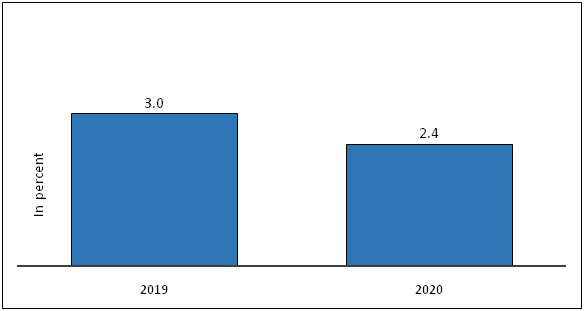
Comparing the month-on-month inflation presented in Figure 2, July inflation is the highest recorded inflation this year.
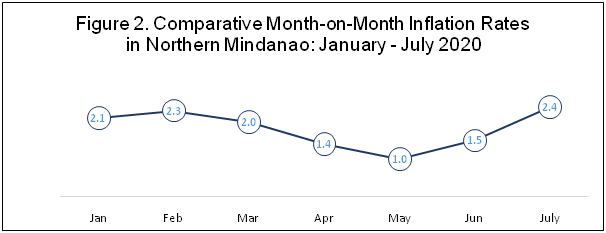
Among the provinces, Bukidnon and Camiguin posted inflation rates higher than the regional average, with inflation rates of 3.5 percent and3.4 percent, respectively. Meanwhile, theprovince of Misamis Occidental posted the lowest inflation rate at 1.6 percent. (Table 1)
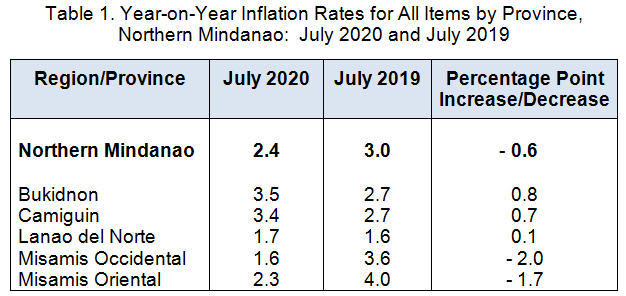
Moreover, Misamis Occidental and Misamis Oriental recordeda decelerationin inflation rates by 2.0 percentage points and 1.7 percentage points, respectively.
Consumer Price Index (CPI)
The Consumer Price Index (CPI) is anindicator of the changes in the average retail prices of a fixed basket of goods and services commonly purchased by households relative to a base year. Northern Mindanao’s CPI for the month of July 2020 was posted at 128.1 which implies that the price of a basket of goods in July 2020 was28.1 percent higher than its price in 2012. Figure 3 shows the CPI for Northern Mindanao for July 2019 and July 2020.
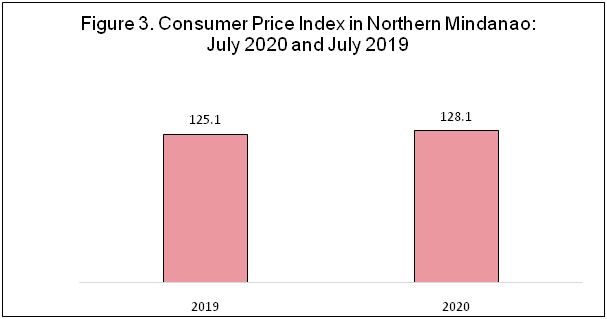
Among all provinces in the region, the highest CPI was recorded in Misamis Occidental at 129.8, followed by Misamis Oriental (128.5), Bukidnon(128.2), LanaodelNorte (126.6), and Camiguin(125.4). This implies that among the five provinces, Misamis Occidental had the fastest movement of commodity pricesin July 2020.(Figure 4)
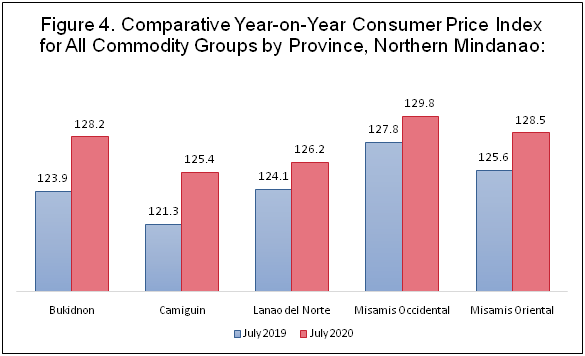
Figure 5 illustrates the CPI for all commodity groups in the region. In July 2020, Alcoholic Beverages and Tobacco registered the highest CPI at 237.7 while Communication registered the lowest CPI at 106.3. This is an indication that Alcoholic Beverages and Tobacco had the fastest movement of price from the base year.
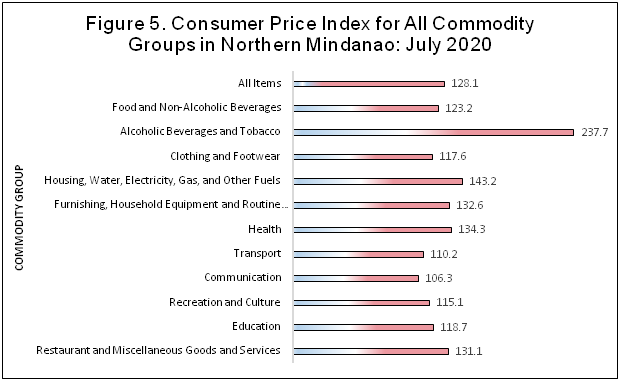
Purchasing Power of Pesos (PPP)
The Purchasing Power of Peso (PPP) shows the real value of peso relative to the base period. The PPP in Northern Mindanao dropped to P0.78 in July 2020. This means that a consumer’s PhP 100 in 2012 can only purchase PhP 78 worth of goods and services in July 2020.
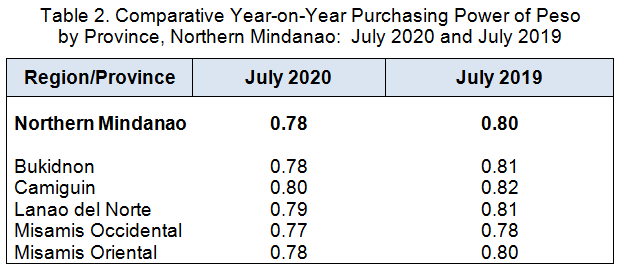
Among the July 2020 PPP of the provinces, Bukidnon posted the biggest decline of0.03 peso while Misamis Occidental posted the lowest decline of 0.01 peso.
RUBEN D. ABARO, JR., CESE
Regional Director
For further inquiries, you may contact:
Statistical Operations & Coordination Division
Philippine Statistics Authority - Regional Statistical Service Office 10
2nd Floor, Bldg. 4, Pride Rock Business Park
Gusa Highway, Cagayan de Oro City
Email:psaregion10@gmail.com
Telefax: (088) 856-4778
TECHNICAL NOTES
Consumer Price Index (CPI)
The CPI is an indicator of the changes in the average retail prices of a fixed basket of goods and services commonly purchased by households relative to a base year.
Used of CPI
CPI is most widely used in the calculation of the inflation rate and purchasing power of peso. It is a major statistical series used for economic analysis and as a monitoring indicator of government economic policy.
Computation of CPI
The computation of the CPI involves consideration of the following important points:
- Base Period – The reference data or base period is the benchmark or reference date or period at which the index is taken as equal to100.
- Market Basket – A sample of the thousands of varieties of goods purchased for consumption and services availed by the households in the country selected to represent the composite price behavior of all goods and services purchased by consumers.
- Weighing System – The weighing pattern uses the expenditures on various consumer items purchased by households as a proportion to total expenditure.
- Formula – The formula used in computing the CPI is the weighted arithmetic mean of price relatives, the Laspeyre’s formula with a fixed base year period (2012) weights.
- Geographic Coverage – CPI values are computed at the national, regional, and provincial levels, and for selected cities.
Inflation Rate (IR)
Inflation rate is the rate of change of the CPI expressed in percent. Inflation is interpreted in terms of declining purchasing power of peso.
Purchasing Power of Peso (PPP)
The purchasing power of pesos shows how much the peso in the base period is worth in the current period. It is computed as the reciprocal of the CPI for the period under review multiplied by 100.

